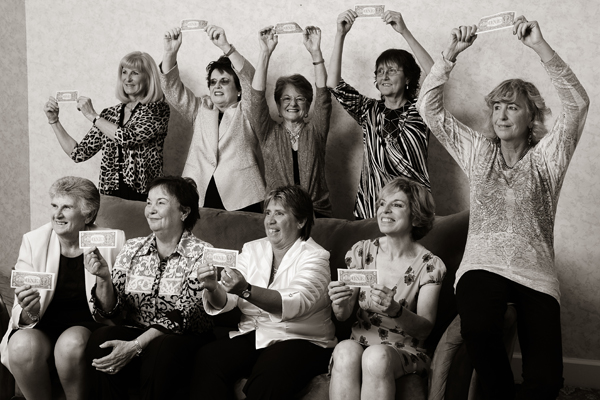WTA Independence Day: Rebellion & Independence
The introduction of Open Tennis in 1968 meant amateur and professional players could compete on the same stages – bringing an end to the hypocrisy of ‘shamateurism’ – but it didn’t do much for the women who played the sport. In fact, in the first couple of years the gulf in prize money offered to men and women only grew. Adding insult to injury, there were few opportunities for the women to shine on their own terms. Tournaments were joint but far from equal.
Matters came to a head in the summer of 1970, when Jack Kramer’s prestigious Pacific Southwest event proposed paying the men more than eight times as much as the so-called ‘fairer sex’ – even though the intended women’s field was packed with stars.
Enter Gladys Heldman, the savvy founder and publisher of World Tennis magazine. Devoted to the sport and a passionate advocate of the women who played it, Heldman counseled Billie Jean King, the powerbroker among the players, against a boycott of Kramer’s event. Instead, when Kramer would not budge on prize money, Heldman arranged for the Houston Racquet Club to host a women-only tournament.
Riding the winds of societal change, the initial $5,000 purse was to come from ticket sales to women’s groups associated with tennis in the city. Heldman also persuaded her friend Joseph Cullman III, an avid tennis fan and chairman of tobacco giant Philip Morris, to provide an additional $2,500 in return for naming rights for his Virginia Slims brand.
For the new Virginia Slims Invitational, Heldman set about recruiting players who signed weeklong $1 contracts with her company. More than just a symbolic act, this approach protected the tennis club from any lawsuit that might be launched by the tennis establishment.
Despite threats from the United States Lawn Tennis Association (USLTA) that they would be banned from competing at Grand Slams and lose their national rankings, nine women signed up: King, Rosie Casals, Nancy Richey, Judy Dalton, Kerry Melville Reid, Julie Heldman, Kristy Pigeon, Peaches Bartkowicz and Valerie Ziegenfuss.
They became known as the Original 9.
“I felt a sense of both fear and exhilaration,” recalled King, four decades on. “We knew we were making history and we had such a strong sense of purpose. I just kept thinking about the vision we had for the future of our sport. We wanted to ensure that any girl in the world that was good enough would have a place to go and make a living playing tennis.”
Any fears were not unfounded, for the rebels did suffer consequences: The two Australians in the group, Dalton and Melville Reid, were forced out of their national championships, for instance. Dalton – who would finish runner-up to Casals at Houston – was even prevented from using her Slazenger racquet for two years.
Still, so pleased was Virginia Slims with the Houston spectacle that its sponsorship skyrocketed; the resulting 21-event World Tennis Women’s Pro Tour offered a total prize purse of some $336,100 in 1971. It was a politically fraught time for the sport as a whole, with the USLTA mounting a rival circuit that relied heavily on the talents of the young Chris Evert and foreign stars such as Margaret Court, Evonne Goolagong and Virginia Wade.
Ultimately, though, the marketing savvy of Virginia Slims and the determined promotional efforts of the players saw the Slims roadshow win the PR battle. In 1973 the sport’s rival factions cast aside differences and the WTA was formed. For the first time, all of the top women would present a united front and the tour hasn’t looked back since: the 2016 edition of the WTA’s Road to Singapore will travel through 33 countries with 56 events, plus the four Grand Slam tournaments, players competing for more than $137 million in prize money.
“Today’s players are living our vision,” King said. “In 1970, and even a few years after we signed the $1 contract with Gladys, people never believed women’s tennis would be a global sport and that players would be making the money they make today. But it is a reality and I know today’s players will continue our dreams for future generations in tennis and inspire other women’s sports as well.”
— Adam Lincoln



